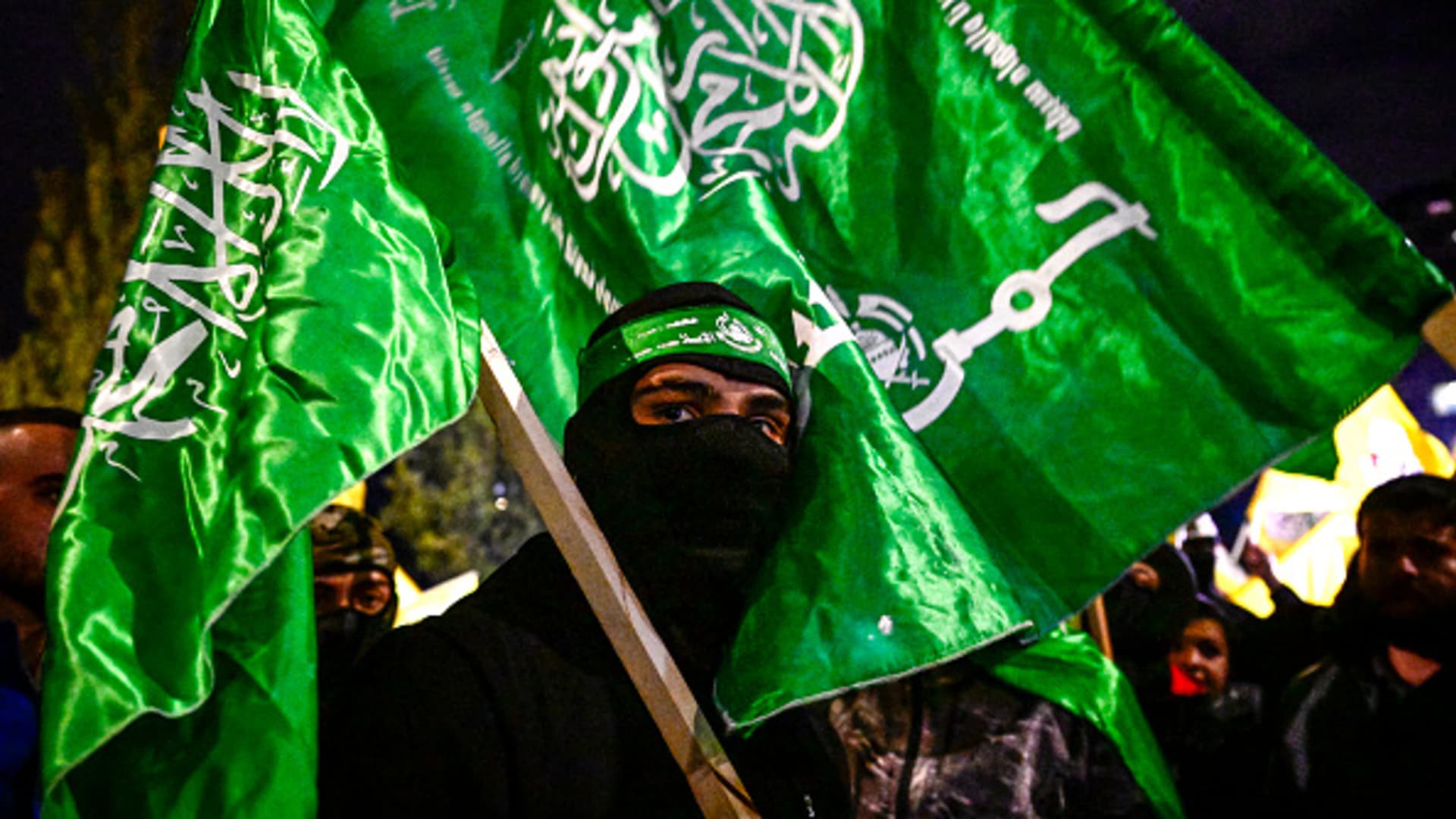Financial investigators in Israel have identified a significant increase in donations to Hamas-linked charities since the group’s deadly Oct. 7 attack on Israel, according to current and former Israeli officials, some of whom requested anonymity to discuss sensitive national security information.
“We saw a 70% increase in money given to Hamas-linked charities,” said Uzi Shaya, a former high-ranking officer in Mossad, Israel’s intelligence service.
In pure dollar amounts, this is equal to an increase of about $100 million in the past seven weeks, according to Israeli Defense and Foreign Ministry officials who requested anonymity.
CNBC could not independently confirm the amount of money flowing to Hamas-linked charities. But current and former U.S. intelligence officials said Israel is capable of tracking this data.
Since the Oct. 7 attack, Israel’s retaliatory campaign has halted commerce in the Hamas-controlled Gaza Strip, making international aid, which only recently started to flow, its only lifeline.
In addition to waging war on the land, sea and air, Israel is battling on a fourth front: the international financial system.
Stopping the inflows of money to Hamas is difficult, because the charity groups that collect the funds are scattered around the world and their structures can be fluid. Charities suspected of funneling money to Hamas often change their names, too, making them all the more difficult to monitor.
“We don’t want to designate charities and cut off funding for things that are legitimate,” a Foreign Ministry official told CNBC.
At Mossad, Shaya was responsible for stopping the flow of money to organizations such as Hamas, Islamic Jihad and Lebanon-based Hezbollah.
Following the October attacks, he returned to assist the Israeli government, where he is once again following the money bound for organizations the U.S. and Israel consider terrorist groups.
Traditionally, he said, foreign money has flowed into Hamas accounts from one of three main sources: Iran, the Islamic person-to-person banking system known as Hawala, and cryptocurrency.
While Iran sometimes directly supplies allies with weapons, over the past four years, Iran has given Hamas between $70 million and $100 million annually in cash for guns, missiles, communication systems and other military purposes, Israeli officials said. This money is believed to have paid for many of the missiles and small arms used in the Oct. 7 attack.
Hamas also has siphoned off foreign aid from other countries earmarked for the citizens of Gaza and used the money to build a massive underground network of tunnels and bunkers that has stymied the Israeli army. Many of the hostages taken on Oct. 7 are believed to be held captive inside those tunnels.
Another significant source of funding comes from an ancient Islamic money transferring system called Hawala, which is based on trust rather than hard assets. Akin to a network of IOUs, Hawala helps money move from one party to another, bypassing Western-style banks.
Charitable money funneled to Hamas via Hawala is sometimes intended for legitimate humanitarian needs in Gaza such as medical care, food and education. But Israel says much of it ends up being spent by Hamas for military purposes.
The movement of money within Gaza’s insular networks is both highly fluid and opaque, making the task of Israeli financial trackers that much more challenging.
“We recognize that people in Gaza are desperate, and that there is severe distress and difficulties,” one Israeli official told CNBC. “The complication is making sure charity is going to the right places, because in the past that hasn’t happened.”
Israel’s National Bureau of Counter Terror Financing maintains a list of charitable organizations that it accuses of directly aiding Hamas’ military. Many of them prominently feature the crisis in Gaza on their home pages. One group even promises to match any donation, up to $1.5 million, that is made on Nov. 28, the global charity awareness day known as “Giving Tuesday.”
Shaya said a third major source of funding for Hamas comes from both charitable and direct contributions through cryptocurrency.
He said officials in the U.S. and Israel haven’t fully caught on to the extent of the transfers because Hamas and its donors don’t use the same cryptocurrencies Western officials typically monitor, such as bitcoin and ethereum. Instead, Hamas’ donor network uses smaller cryptocurrencies.
Officials agreed that Hamas had become adept at raising and transferring money through crypto, but they also said most of the blockchain companies they had been in touch with were helpful in stopping financial transfers. They gave particular credit to Binance for complying with requests.
Not everyone thinks Binance deserves credit, however. On Nov. 21, U.S. authorities announced a massive $4.3 billion settlement with Binance over alleged violations that included “failure to implement programs to prevent and report suspicious transactions with terrorists — including Hamas’ Al-Qassam Brigades,” according to a Treasury Department release.
Ensuring that individual Gazans have economic opportunity without simultaneously funding Hamas militants has proven to be a difficult challenge for Israel.
An Israeli-Egyptian blockade of Gaza, imposed in 2007 when Hamas took political control of the territory, has kept the unemployment rate at around 47%, for the population of approximately 2 million people.
In recent years, Israel has provided a direct avenue for Qatari financial assistance for Gaza, enabling the transfer of hundreds of millions of dollars into the region as part of a broader effort to ensure that Gazans could develop a functioning economy.
Israel feared that without one, Hamas would be more likely to resort to violence. Beyond direct funding, Israel also allowed 18,000 Gazans to enter Israel to work, again hoping that a stable economy would pacify Hamas. But these hopes were shattered on Oct. 7.
“We made a big mistake in thinking with Western values,” Shaya said in a Zoom interview from his home in Israel. “We believed that Hamas was most interested in staying in power and staying funded; we forgot we don’t live in the West.”
Israeli officials believe that ever since Israel’s bombardment of Gaza drove Hamas’ leadership there into hiding, some funds have been diverted to Hamas in the West Bank. Still more money has been held up in various accounts around the world.
Even Iranian funding has dried up for now, the officials said, as Iran’s leaders wait to see what happens in Gaza before they commit any more money to Hamas.
In the meantime, most of the West’s financial leaders have been sympathetic to Israel’s requests to cut off funding for Hamas, and many have taken action on their own. This includes the Treasury Department, which has imposed sanctions on several Hamas-linked organizations in recent weeks.
Still, Shaya said there is more the West can do.
“If the U.S. and the Europeans wanted to make a bigger statement, there should be a credible threat to cut banks, especially those in Turkey, Qatar and Malaysia, from U.S. correspondent banks,” he said.
“That kind of pressure would make a real and immediate difference.”
When the fighting eventually ends, Gaza will likely be rebuilt in one form or another, said Israeli officials. And for that, it will need billions of dollars worth of international aid.
When this process begins, they said, it will be crucial to account for every dollar to ensure that it goes directly to the reconstruction effort and not to rearming Hamas.





